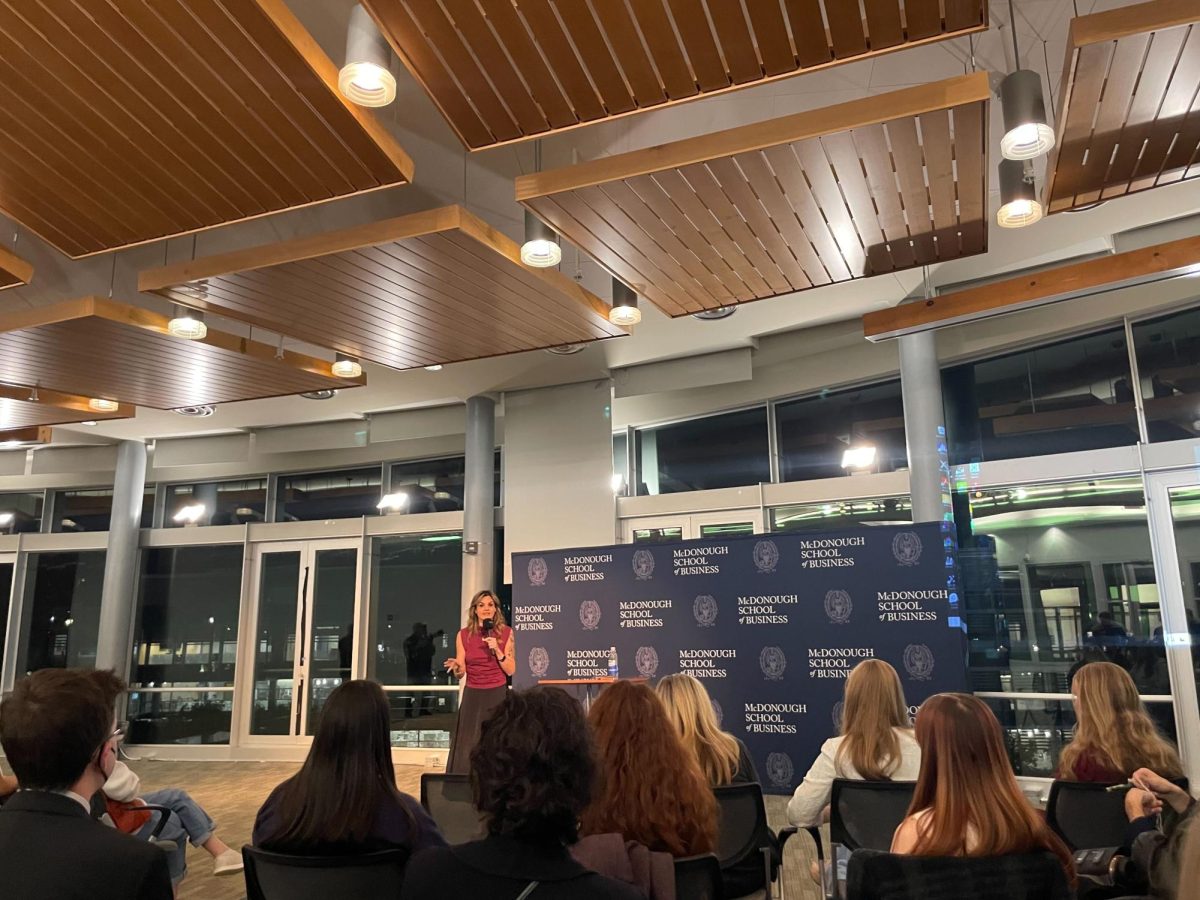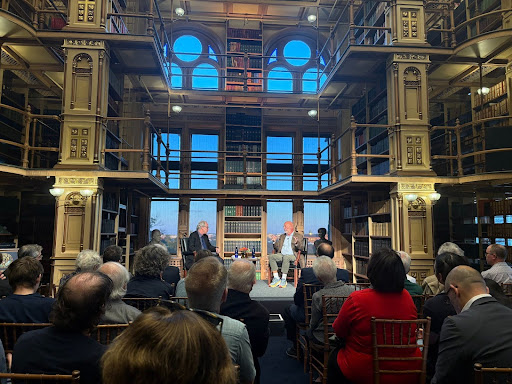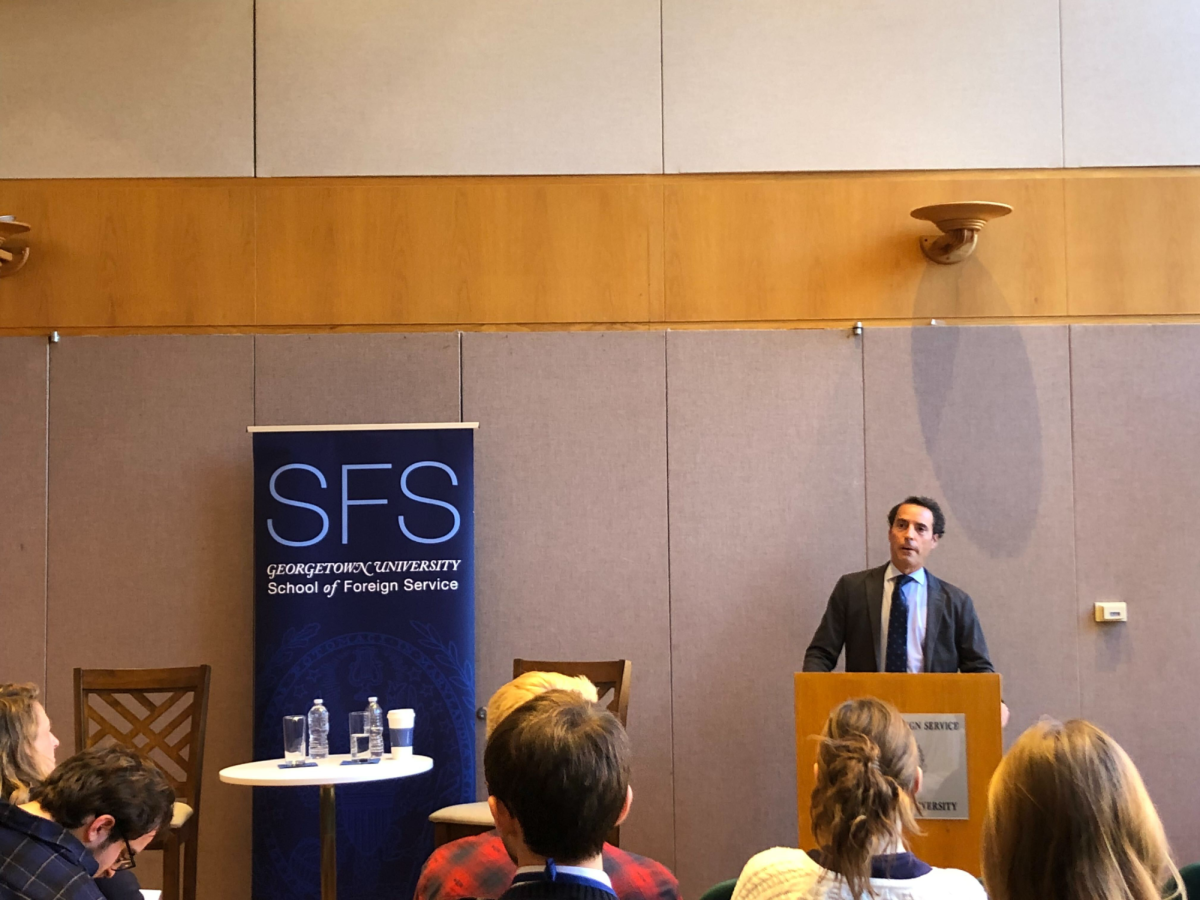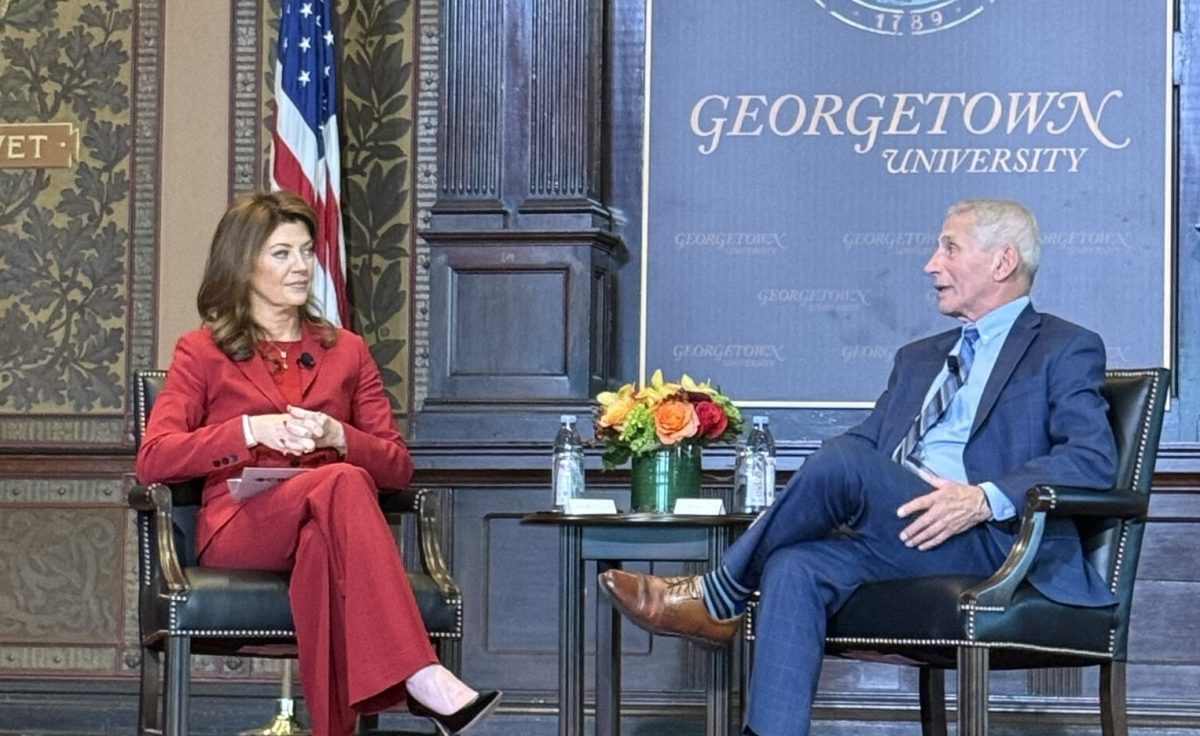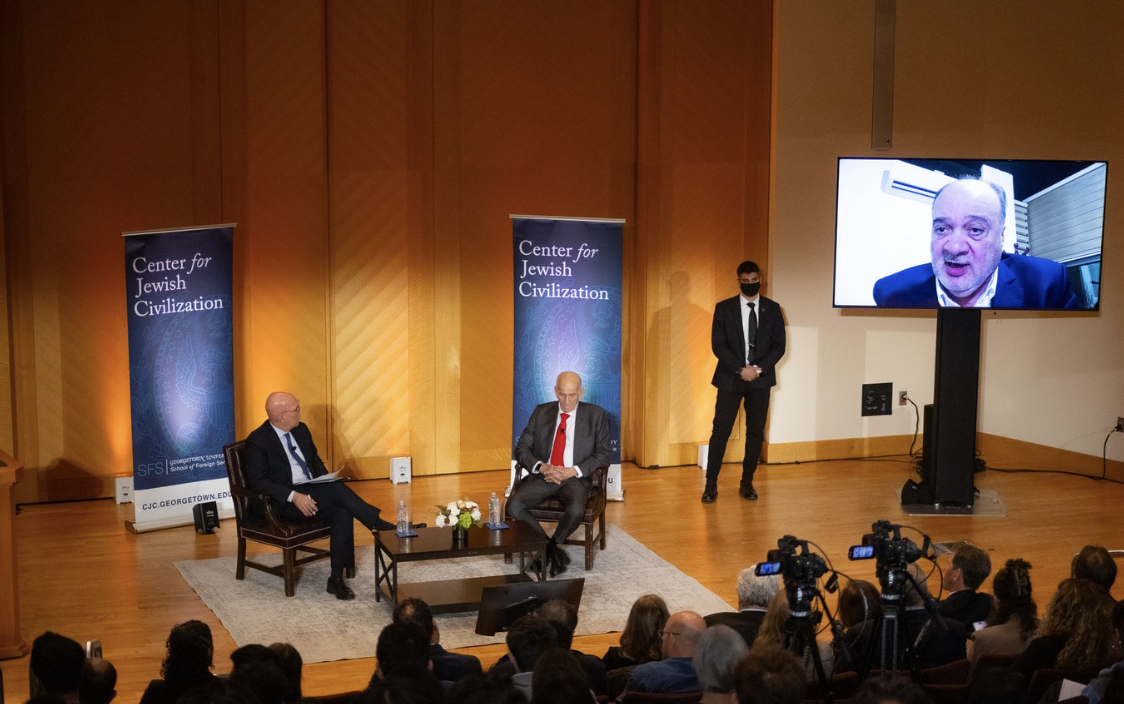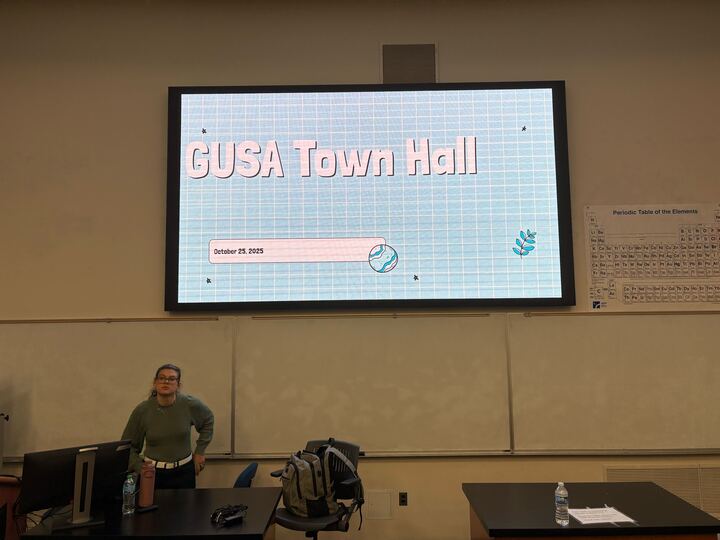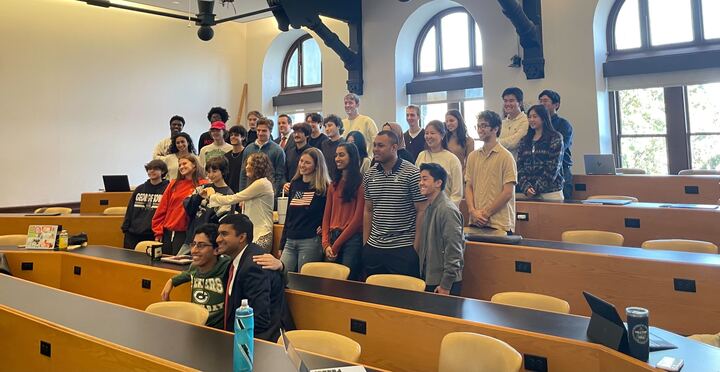A novelist examined his career and new book at an event hosted by a Georgetown University academic group Sept. 30.
Rabih Alameddine, the visiting chair at Georgetown’s Lannan Center for Poetics and Social Practice, which studies the language arts, spoke about his new novel, “The True True Story of Raja the Gullible (And His Mother),” and discussed the broader literature landscape. The event, which the Lannan Center hosted, was moderated by Tope Folarin, the Lannan visiting lecturer in creative writing.
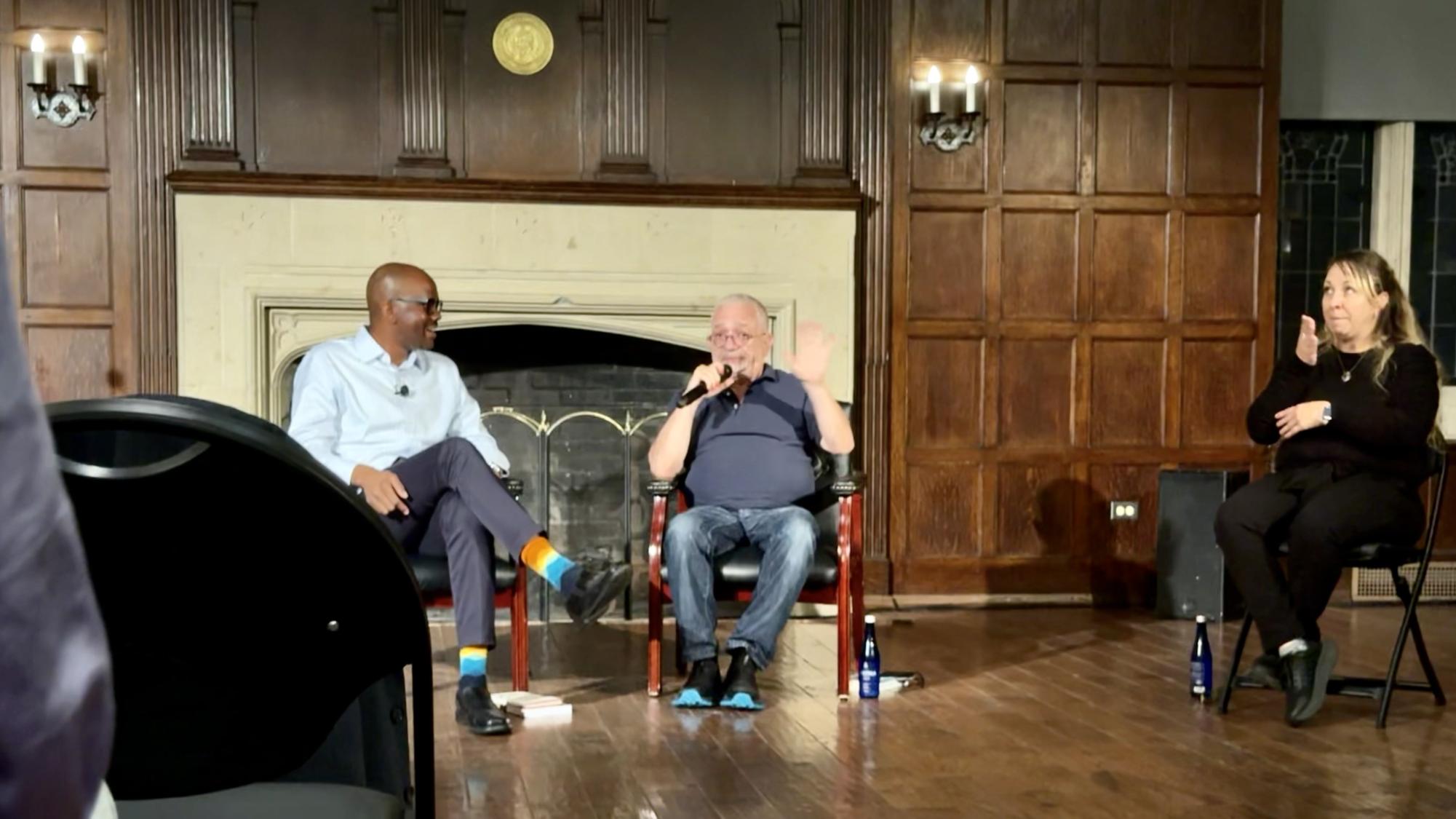
Alameddine said his journey to becoming an author was nonlinear because he didn’t consider it an option growing up.
“When I was younger, it never occurred to me that there could be such a thing as a career in writing,” Alameddine said at the event. “I could become an engineer, or I can become a doctor. Actually, three options: engineer, doctor, or failure.”
The new novel, which was recently longlisted for the National Book Award for Fiction, follows the story of 63-year-old Raja and his mother, who live together in Beirut, Lebanon. When Raja takes an opportunity to come to America for a writing residency, he begins to reminisce about the life he spent in Lebanon, including societal and personal hardships.
Folarin praised the book for its originality and highlighted Alameddine’s non-traditional career path, including studying engineering and business.
“Rabih’s book is fantastic, and it’s wonderful and it’s so necessary,” Folarin said at the event.
Alameddine said that although he studied engineering, he only began considering a different career years later, after receiving a potentially fatal diagnosis for HIV.
“I tested positive in, I think, 1985, and I thought I had two years left to live,” Alameddine said. “And if I had two years left to live, I had to think about what I wanted to do with my life and what I wanted to do with my life, I realized, was to get a PhD.”
Alameddine began painting a year into his doctorate in clinical psychology and wrote his first book soon after; he said he sees forms of art as similar to one another.
“I’m not sure there’s a separation,” Alameddine said. “It’s hard to explain. I mean, in some ways, I don’t see a difference between a great novel and a great poem and a great sonata.”
Alameddine said authors from marginalized communities tend to only be seen through their identities, noting the difference between white novelists such as John Updike and Black authors like Toni Morrison.
“When people talk about John Updike, they begin to talk about literature,” Alameddine said. “When we talk about Toni Morrison, we talk about how amazing it was that black women can do all this.”
Alameddine added that this reality for authors contrasts with a lack of politicization in American literature.
“What is interesting to me is that a lot of American literature ignores the bigger culture,” Alameddine said. “You could write about a couple who get divorced because they don’t have money. We’ll never discuss capitalism, which is the natural problem with finance. It’s completely ignored. We never talk about the system, at least not in literature.”
Alameddine said that he aimed in his writing to capture what he felt after witnessing an emotional experience between two women who cried together following a miscarriage.
“One of the first thoughts when I was seeing this is that I can’t do that in a book yet,” Alameddine said. “But also, I realize, I don’t want to think that I can do this, because if I think I can do this, I won’t shoot for higher, because I can’t think of a higher thing to shoot for than to connect to someone.”
Alameddine said all art, regardless of medium, should aim to illustrate the connection between people, even if they are strangers.
“I want my book to do the same thing,” Alameddine said. “I want a painting to do the same thing, to make me feel, to make me connect to something that is more than just me.”


